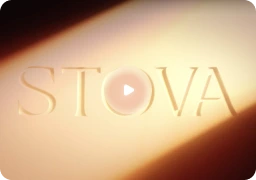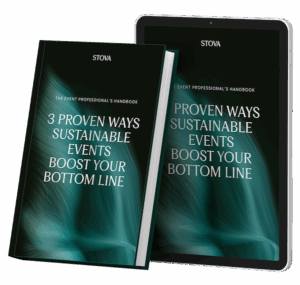5 Steps to Creating an Effective Trade Show Marketing Plan
June 28, 2022
Even after two years of cancellations during the pandemic, B2B marketers continue to rate in-person events as one of their most effective marketing tactics, and for good reasons. Trade shows bring together businesses in the same industry and draw hundreds, if not thousands, of attendees every year.
An effective trade show is a hub for innovation and networking and, for sponsors, a powerful way to boost brand recognition and acquire valuable leads. But for these things to happen, it is vital to have a robust marketing strategy and a comprehensive timeline from initial planning to post-event follow-up.
While many aspects of trade show marketing are much the same as they have been for years, the post-pandemic environment introduces some new challenges (and opportunities). Among the most notable of these are the fact that virtual and hybrid event formats are here to stay. It is important that your marketing plan takes this into consideration.
Below you’ll find our recommendations and key steps to take in creating your marketing plan:
1. Define Your Marketing Goals
No marketing tactic can be expected to work if it isn’t backed by some well-thought-out goals, and trade shows are no exception. The goals you establish not only need to be achievable but also measurable and specifically tailored to the type of trade show you plan to attend.
There are several popular reasons why businesses attend trade shows, such as to boost sales, meet vendors, or generate leads. Many trade shows are also well-suited to direct selling, which is one of the most common goals.
Most trade show attendees are interested in seeing new products being featured, which is why many sponsors use the opportunity to announce and demonstrate their latest products. That’s why it’s a good idea to plan your attendance around new product launches.
You may have multiple goals in mind, and that’s fine too. However, it’s important that you build a marketing plan around all those goals. For example, you might want to sell directly to visitors to your booth, in addition to collecting high-value leads to follow up with later.
2. Identify the Best Trade Shows
Trade shows are almost invariably industry-specific. Some cater entirely to the manufacturing sector, while others focus exclusively on innovative digital technology, and so forth. Choosing the right trade shows to attend is vital for maximizing your return on investment.
You should also focus on trade shows that are suited to your particular audience, so it’s vital to have a clear picture of your ideal customer before you start marketing. For example, some trade shows cater to small businesses, while others are aimed toward global enterprises.
You can find trade shows all over the world using Google or the Trade Show News Network, which also allows you to filter events by industry. Once you’ve chosen a trade show, be sure to register early to have the best chances of reserving a booth in the spot you want.
3. Create Marketing Timeline
Preparing for a successful trade show isn’t something that can be done in a few weeks, and you’ll end up missing out if you start marketing just weeks before the event. For larger events, you should ideally start planning a year in advance and start building up hype soon after.
Trade show marketing begins long before the event itself and extends long after it’s over, so you must establish a timeline. This is especially important when it comes to announcing your presence at the tradeshow. Too early, and there’s a risk of would-be visitors forgetting about you, but announce it too late, and you won’t have time to build enough hype.
To ease the tension and maximize your chances of a successful event, it’s important to create a multi-step timeline incorporating your announcements, email newsletter flow, social media posting, and other content publishing.
4. Publish Engaging Content
Although trade shows have always been highly effective for direct selling and lead generation, it used to be very hard to measure their effectiveness. That’s all changed in the era of beacons and mobile apps, which provide in-person attendees with additional information while granting sponsors and organizers the opportunity to collect valuable insights into their audiences.
Integrating content marketing into your trade show marketing strategy lets you take advantage of these technologies and reach your target audiences in new ways, before, during, and after the event. For example, you can launch an email marketing campaign to inform existing customers about the upcoming trade show. This is also a great opportunity to build hype, especially if your attendance there revolves around a new product launch.
Other proven content formats for raising awareness and building hype around your attendance are social media posts, blog posts, and slideshow presentations. Not only will such a content strategy encourage attendees to visit your booth they will also increase website traffic and help generate leads and sales even from people who won’t be visiting the tradeshow.
5. Follow up with Your Visitors
The post trade show follow-up is perhaps the most important marketing process of all. Failing to follow-up, however, can cost you leads and sales. After all, attention spans are short in the era of constant distraction, so it’s easy for the people you meet at trade shows to forget about you. Chances are, they’ll forget about you even quicker if the tradeshow was very large.
While trade shows are important opportunities to collect leads by encouraging visitors to your booth to sign up for your email newsletter or exchange business cards, it’s all for nothing if you don’t follow up. There are many ways to follow up, including by sending attendees thank-you messages by email, sending LinkedIn connection requests, and following them on other social media platforms.
Stova’s event management software includes the marketing tools that trade show organizers and sponsors need to deliver an engaging attendee experience and maximize their return on investment. Contact us today to learn more.
Whether your event is virtual, hybrid, or in-person, enhance your attendee’s journey with an event ecosystem built for your audience. Ready to walk through Stova's event technology solutions? Schedule some time with us today.


